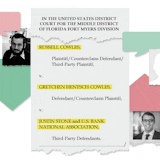Joshua Mills has been the Mercedes-Benz service director for Sears Imported Autos of Minnetonka for a couple of years, having previously worked as a master technician, service director for commercial vehicles and a service adviser. Mills and a lot of other managers in the automotive industry have a chronic problem of hiring and retaining skilled service technicians. Mills now has an approach, combining training and aggressive recruitment, that seems to be working.
Q: How big is the challenge of hiring auto technicians?
A: It's an incredible challenge. I wasn't in this position 10 or 15 years ago, but I was a tech, and you could apply for a job at a Mercedes-Benz dealership, BMW dealership, Audi, and it was tough to get in. Now I put out a technician want ad, and I have one that's constantly running, I maybe get one applicant every three weeks. And I publish zero qualifications for the job whatsoever.
Q: What is the origin of the strategy you have adopted?
A: Mercedes-Benz has a program called M-B Drive. Basically, they work with trade schools, mainly Universal Technical Institute. They take top-tier students who want to work for Mercedes-Benz, and they have to pass a test and interview and get accepted into M-B Drive. So for the dealers, you send an e-mail and you click on your region and you see who is available from M-B Drive. You want to hire one of these guys from M-B Drive, it's $10,000, a fee paid to Mercedes for the training program.
You can also hire them before M-B Drive and sponsor them to go through M-B Drive for a $5,500 fee. So I've been working with UTI, looking at top-tier candidates, talking to them and then sponsoring them. And I put them on a two-year contract. So we are proactively going after these kids, not waiting for Mercedes to send a list of who's graduating.
Part two is the training program here. I used to work for M-B in Chicago, and they had a shop foreman that would bring all the new technicians and teach them on a daily basis. It was really good curriculum. When I came here there was really none of that. They would take a technician and partner them with a journeyman technician until that journeyman technician felt [trainees] were ready. There's no consistency between the training. I want to train them the way we want to train them, so that we can retain them, so we can fix all these cars the same and have less customer returns and higher customer retention.
Q: Did Mercedes provide any help in how to set up training?



